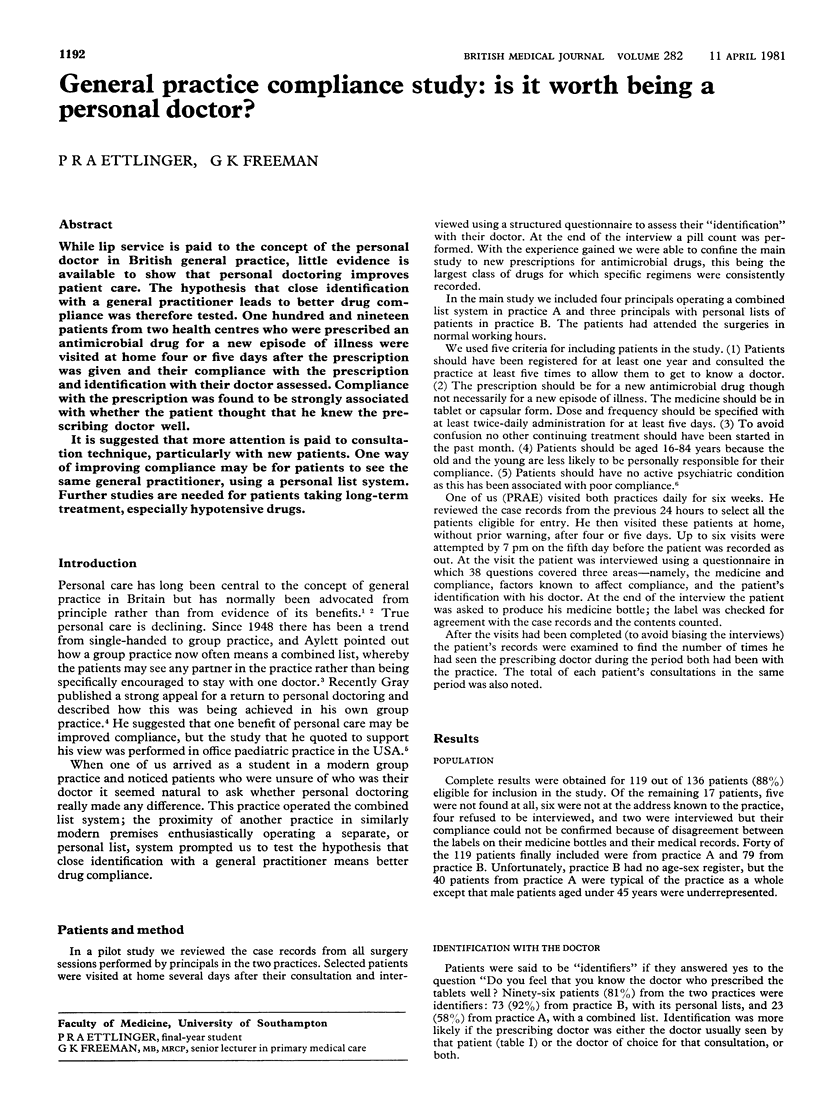Abstract
While lip service is paid to the concept of the personal doctor in British general practice, little evidence is available to show that personal doctoring improves patient care. The hypothesis that close identification with a general practitioner leads to better drug compliance was therefore tested. One hundred and nineteen patients from two health centres who were prescribed an antimicrobial drug for a new episode of illness were visited at home four or five days after the prescription was given and their compliance with the prescription and identification with their doctor assessed. Compliance with the prescription was found to be strongly associated with whether the patient thought that he knew the prescribing doctor well. It is suggested that more attention is paid to consultation technique, particularly with new patients. One way of improving compliance may be for patients to see the same general practitioner using a personal list system. Further studies are needed for patients taking long-term treatment, especially hypotensive drugs.
Full text
PDF


Selected References
These references are in PubMed. This may not be the complete list of references from this article.
- Aylett M. J. Seeing the same doctor. J R Coll Gen Pract. 1976 Jan;26(162):47–52. [PMC free article] [PubMed] [Google Scholar]
- BERGMAN A. B., WERNER R. J. Failure of children to receive penicillin by mouth. N Engl J Med. 1963 Jun 13;268:1334–1338. doi: 10.1056/NEJM196306132682404. [DOI] [PubMed] [Google Scholar]
- Charney E., Bynum R., Eldredge D., Frank D., MacWhinney J. B., McNabb N., Scheiner A., Sumpter E. A., Iker H. How well do patients take oral penicillin? A collaborative study in private practice. Pediatrics. 1967 Aug;40(2):188–195. [PubMed] [Google Scholar]
- FOX T. F. The personal doctor and his relation to the hospital. Observations and reflections on some American experiments in general practice by groups. Lancet. 1960 Apr 2;1(7127):743–760. doi: 10.1016/s0140-6736(60)90632-2. [DOI] [PubMed] [Google Scholar]
- Gray D. J. The key to personal care. J R Coll Gen Pract. 1979 Nov;29(208):666–678. [PMC free article] [PubMed] [Google Scholar]
- Roth H. P., Caron H. S., Hsi B. P. Measuring intake of a prescribed medication. A bottle count and a tracer technique compared. Clin Pharmacol Ther. 1970 Mar-Apr;11(2):228–237. doi: 10.1002/cpt1970112228. [DOI] [PubMed] [Google Scholar]
- Sanson-Fisher R., Maguire P. Should skills in communicating with patients be taught in medical schools? Lancet. 1980 Sep 6;2(8193):523–526. doi: 10.1016/s0140-6736(80)91844-9. [DOI] [PubMed] [Google Scholar]


